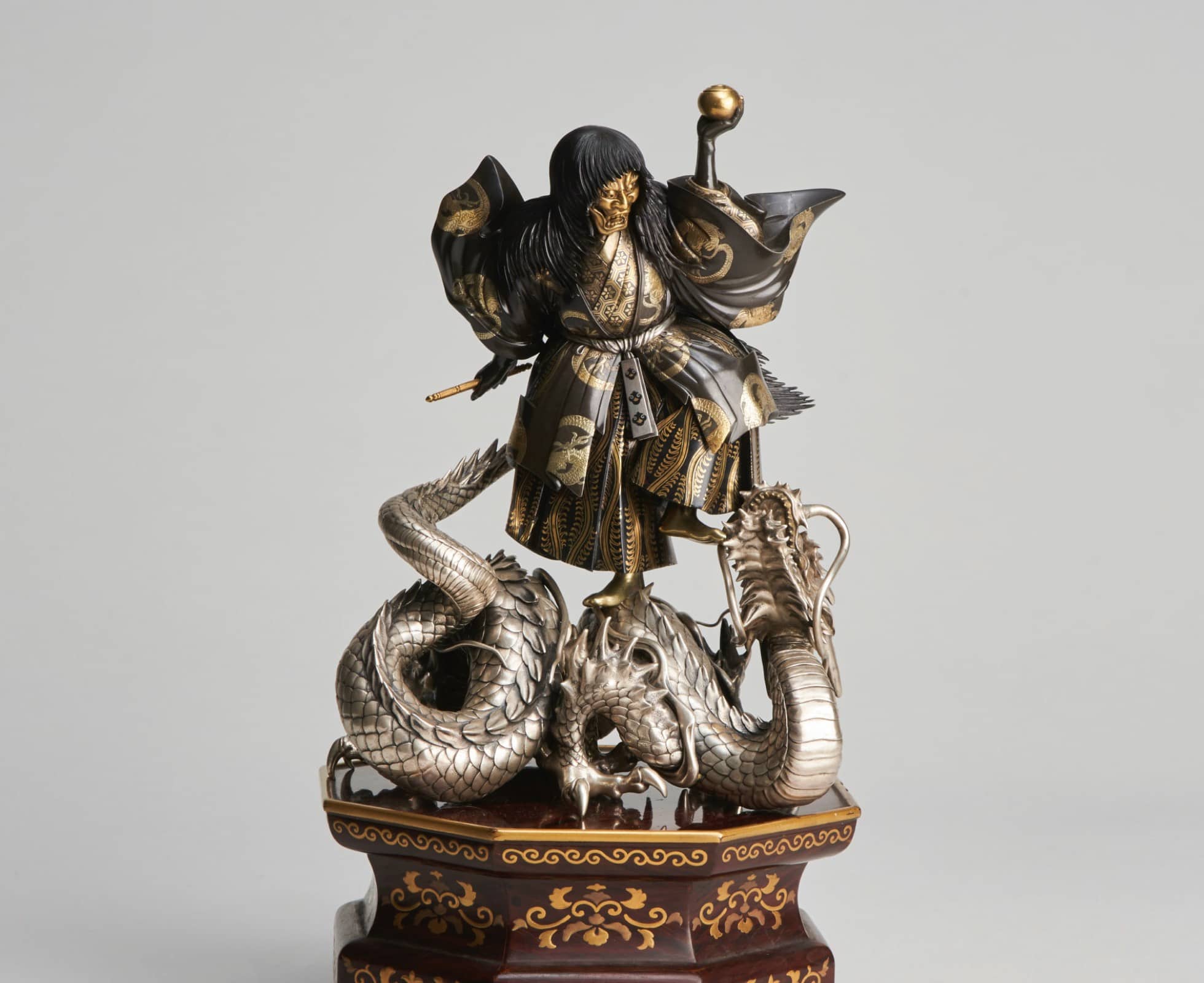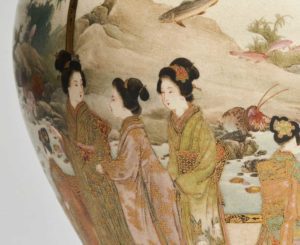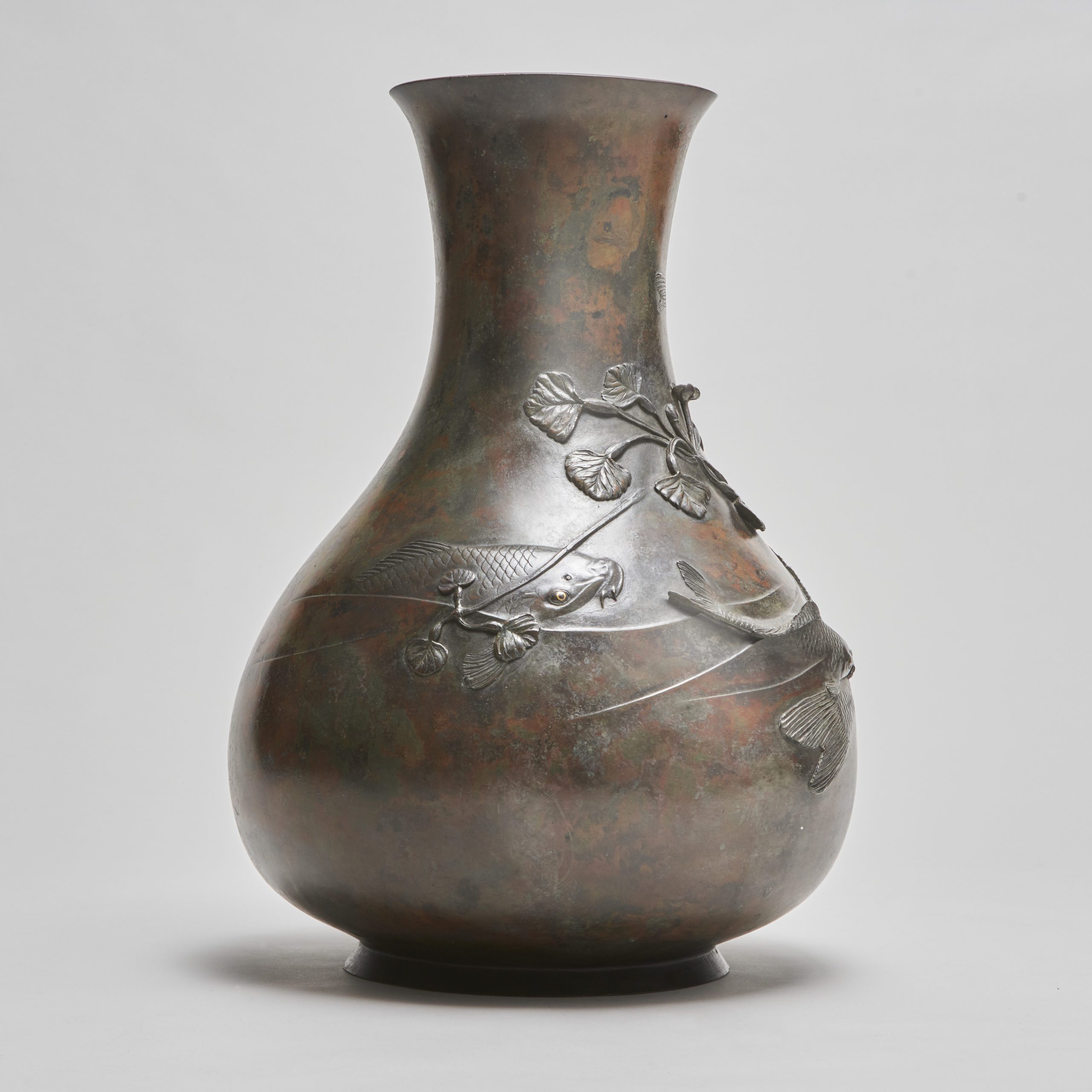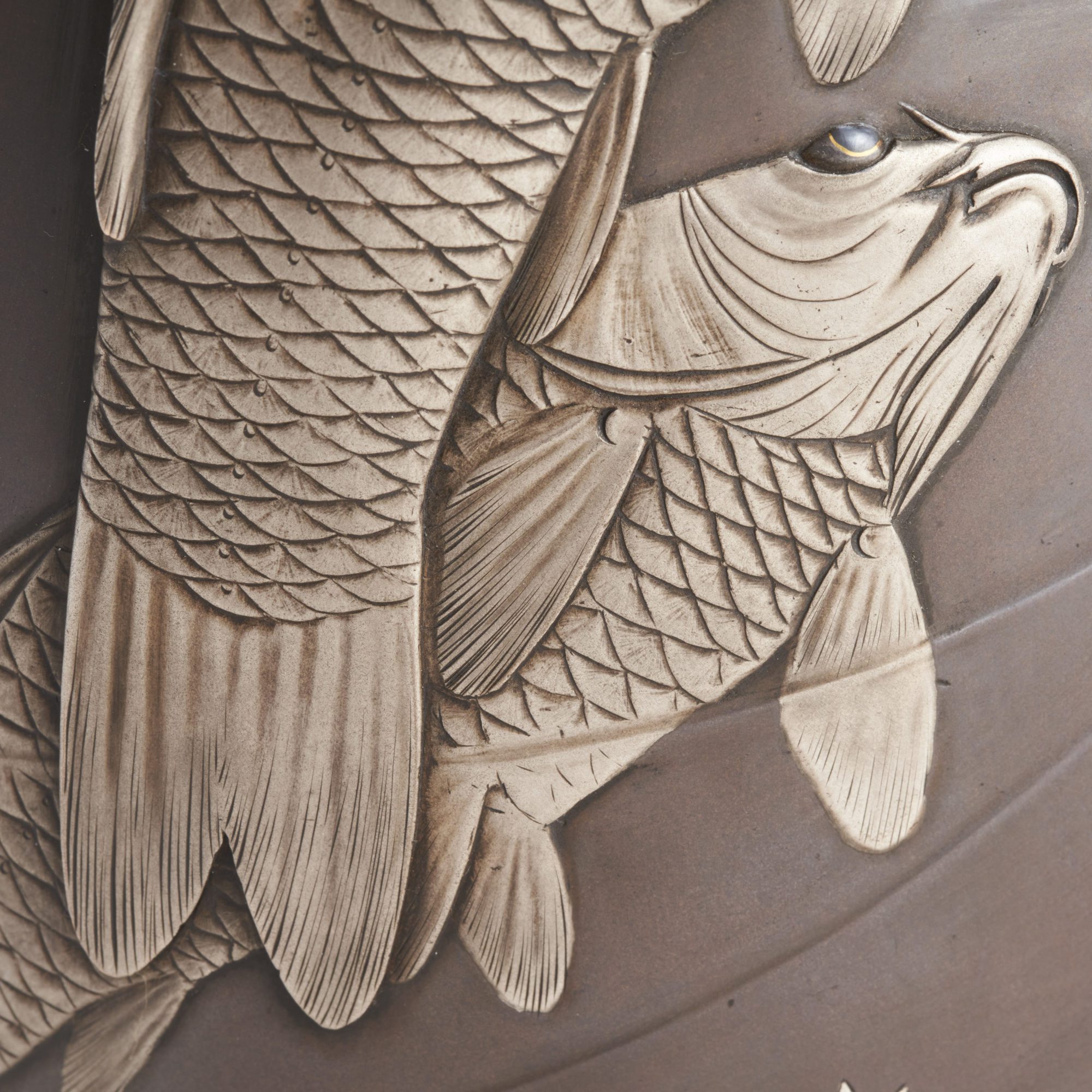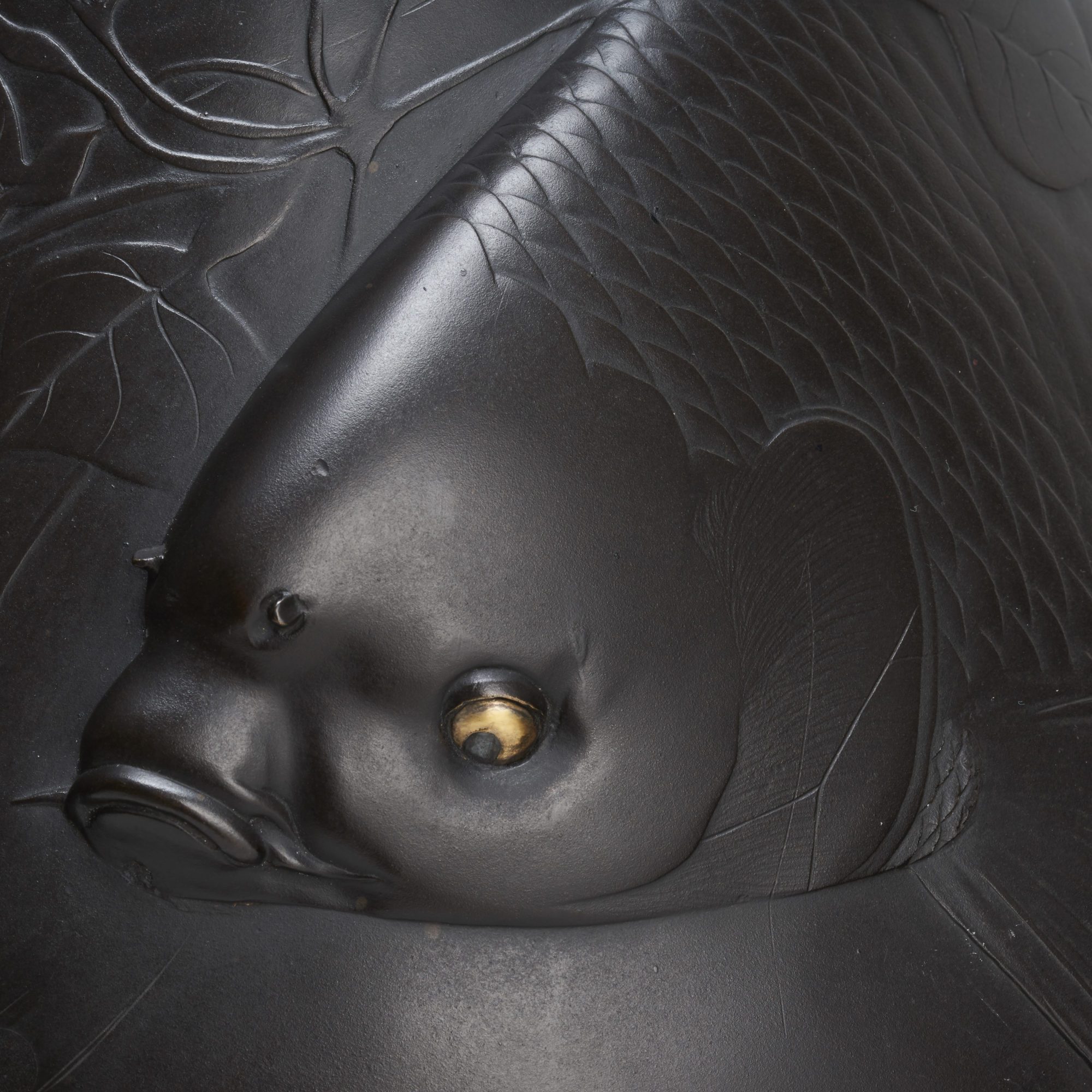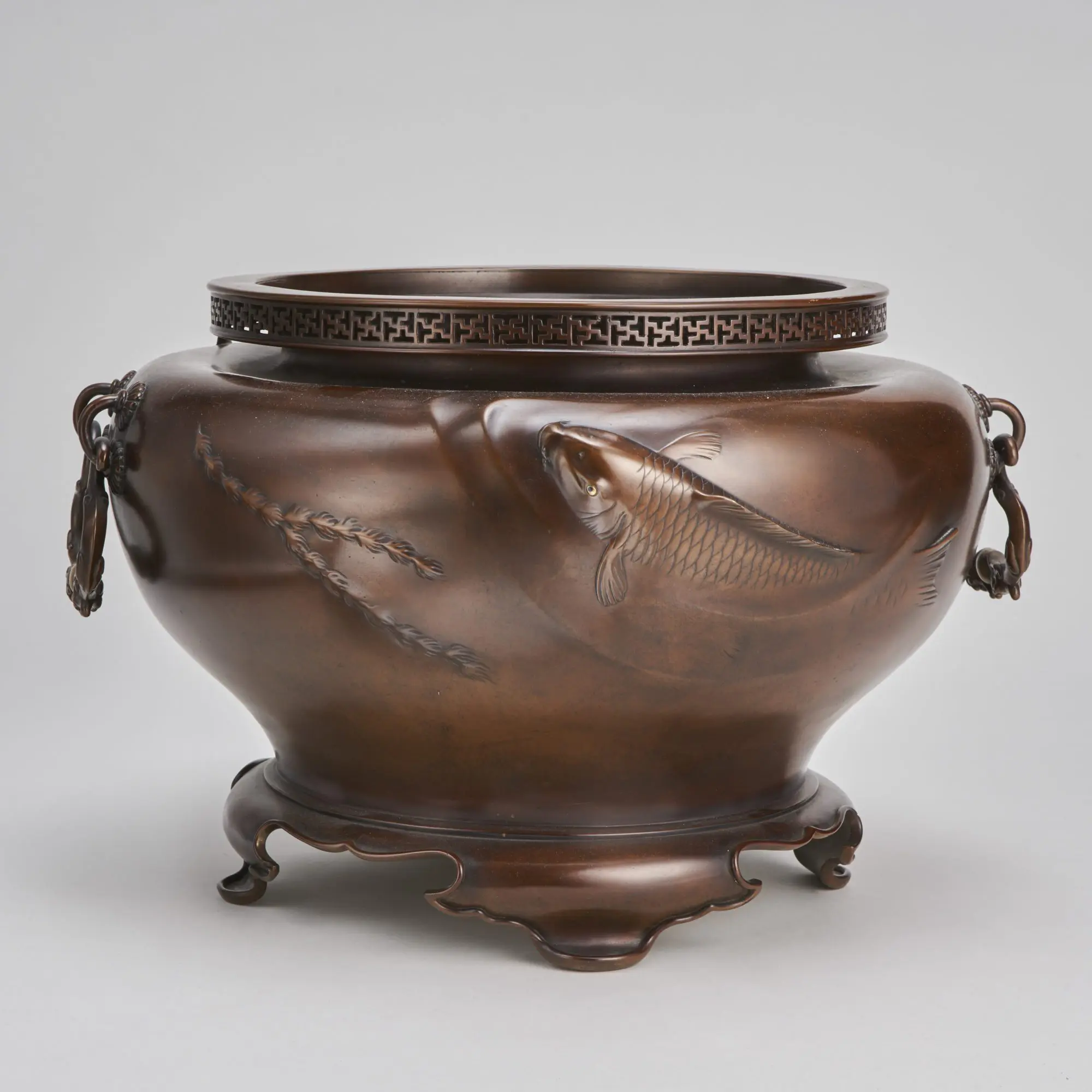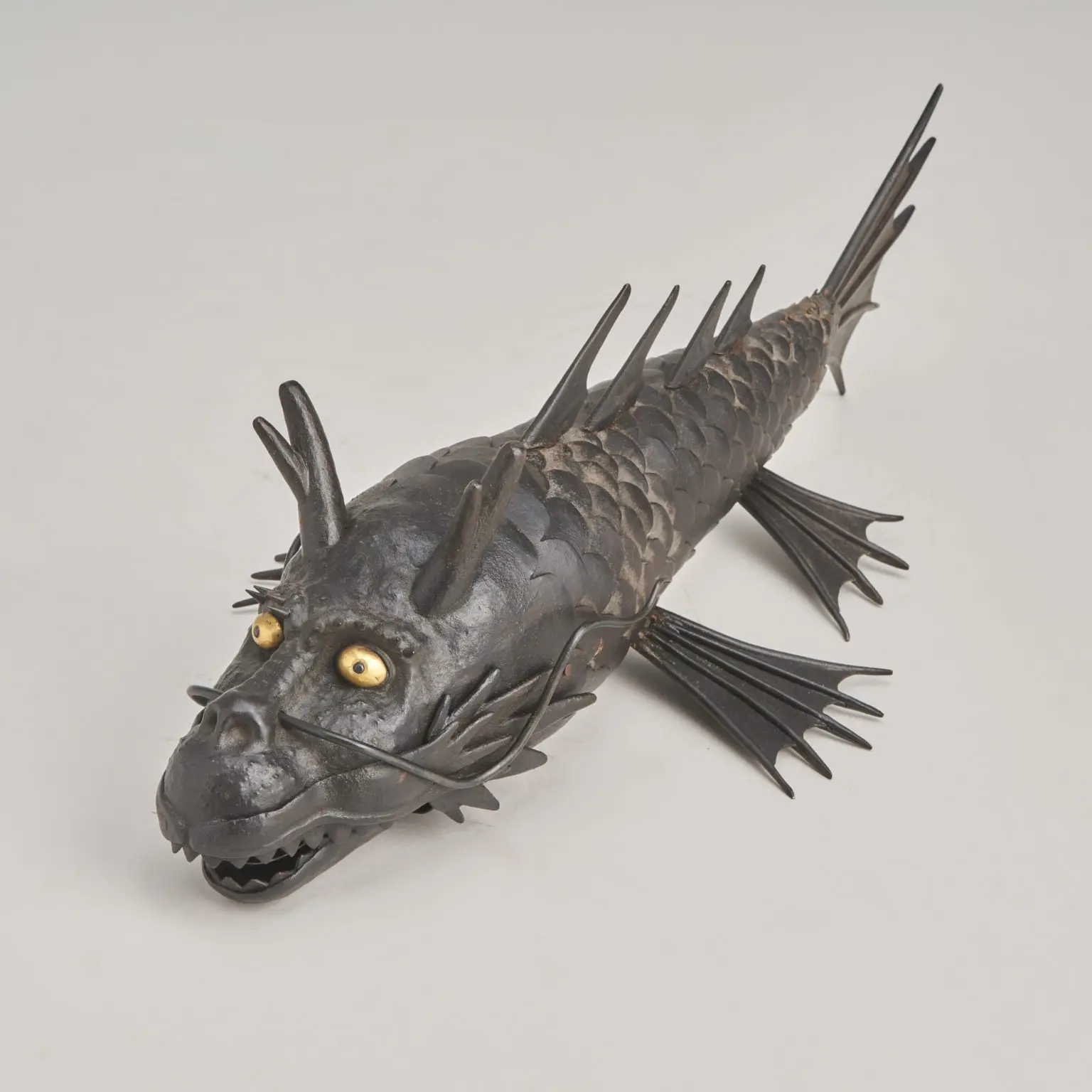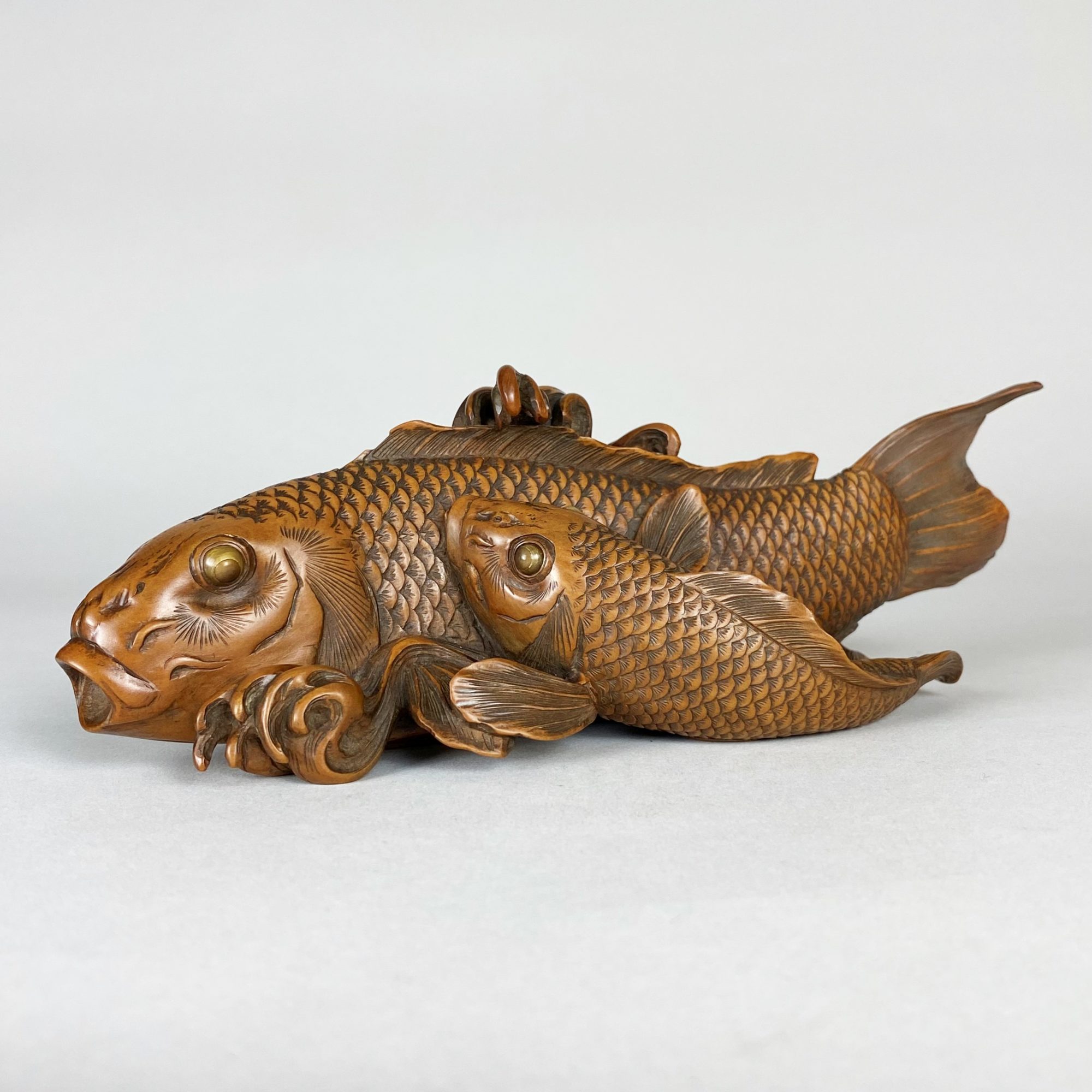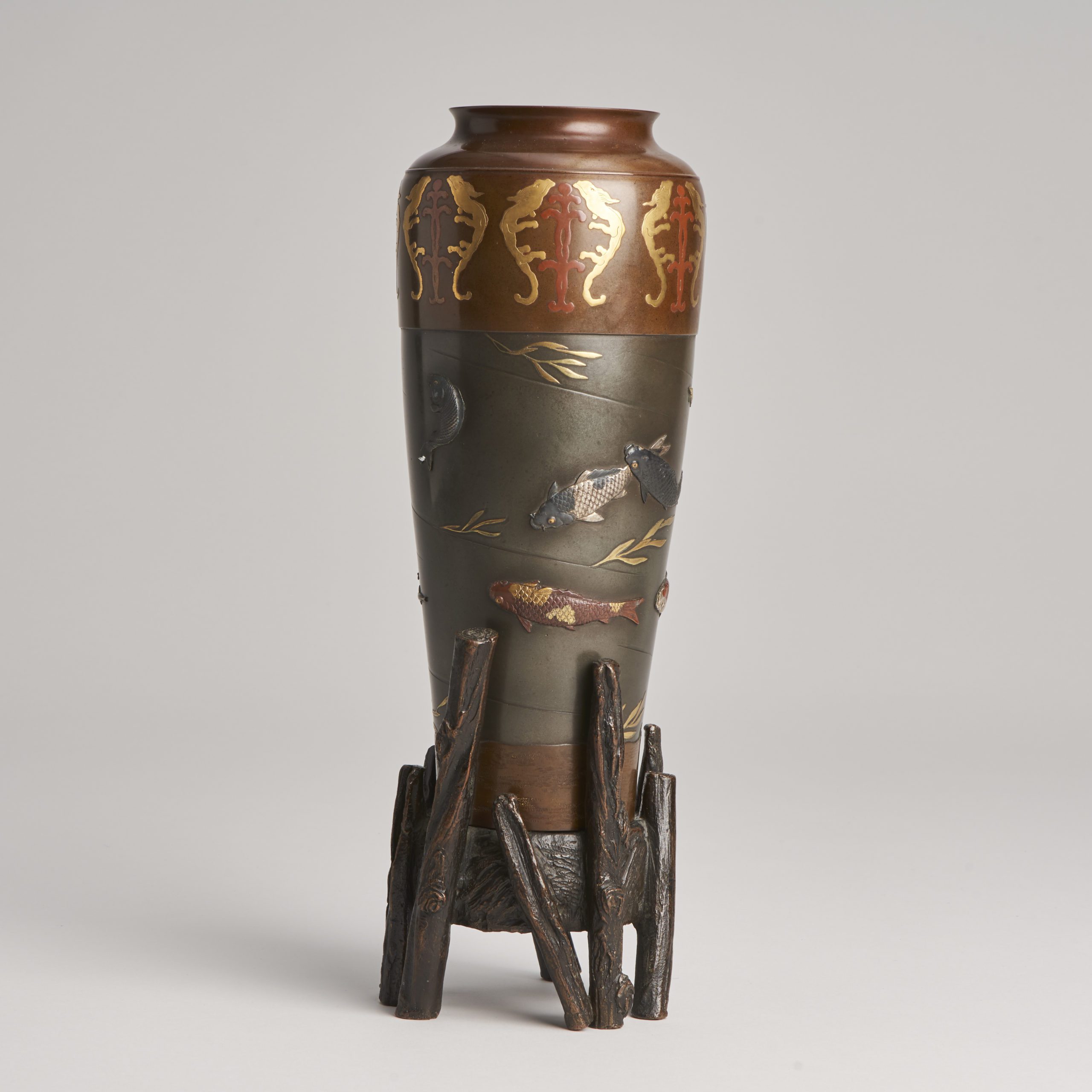One of the most revered creatures in Chinese and Japanese folklore, the Carp is a fresh-water fish originally found in lakes and rivers in Central Europe and Asia. Their ability to survive and thrive in many challenging climates and conditions has led to them becoming hugely widespread with examples of various sub-species now found in the wild on every Continent across the globe with the exception of Antarctica.
Carp swim close to the surface on this beautiful Bronze vase (Japanese, late 19th Century)
In this article, we take a look at this legendary creature and its rise from the dinner plate to the Emperors Palace. As always, you can click on any of the images to take a closer look.
A pair of Silver Carp swimming on a Japanese Bronze vase
Domestic varieties of Carp were originally bred in China as far back as the Fourth Century (AD) and decorative, coloured species were then developed by breeders for ornamentation. These would go on to become ancestors to the pet goldfish that we know and love today.
Certain breeds and variations have become increasingly sought after and in 2018, one fish was acquired by a Chinese collector for 2 Million Dollars. Yes, that’s right, 2 Million Dollars!
A large Carp with inlaid eyes depicted on a large pair of Black patinated Bronze vases (Circa 1880)
In Japan, coloured Carp are known as “Koi”, (which itself means Carp.) In the West, we often refer to these fish as “Koi Carp” so amusingly, when we say that, we are actually saying “Carp Carp.” .
The word Koi has also become a homophone for affection or love and so the fish is seen as a symbol of companionship and friendship in Japan.
Carp swimming amongst lilies on a wonderful Bronze and multi-metal Koro by Oshima Joun
Because of their tenacity, beauty and longevity, The Carp is highly esteemed in both Chinese and Japanese culture and carries much meaning and symbolism. They are seen as symbols of luck and good fortune in both cultures.
They are known to live to great ages – the oldest verified was Hanako, a red Japanese Koi who was born in 1751 and amazingly lived until 1977 making her 226 years old when she died. To put that into perspective, she was five years old when Mozart was born and she died the same year that the Sex Pistols released their first album.
A large Carp making ripples as he swims amongst reeds on this impressive Bronze jardiniere
Tenacity is perhaps the quality that Koi are most associated with though. In Chinese legend, the Carp is said to ascent the Yellow River, swimming powerfully against the current, fighting its way through the five gates (waterfalls) before finally leaping the waterfall known as “The Dragon Gate.”
Legend has it that any Carp able to pass the this challenge will be transformed into a Dragon. This scene is a favourite subject of Chinese and Japanese artists and is depicted across many art forms. Often, the mythological figures of Benkei and Kintaro are pictured fighting with Giant Carp under waterfalls.
An Iron Jizai Okimono of a Shachihoko (Dragon fish)
These days, when Chinese children pass their State examinations, it is known as “Leaping the Dragons Gate” whilst in Japan, Carp-shaped kites and lanterns are flown each year on Childrens Day, (5th May). The idea being that children should follow the example set by the Carp through working hard in order to succeed in life.
A charming Meiji-era boxwood Okimono depicting a pair of Koi
The popular Japanese proverb, “Koi no takinobori” translates as “The Carp who climbed the falls” and is often spoken as a source of inspiration during challenging times.
Another, (perhaps less optimistic) proverb is “Manaita no eu no Koi” – a reference to a doomed situation as it translates as “Carp on a chopping board”.
Here are some more of our favourite depictions of Carp as seen in our collection of Japanese Fine Art and Antiques. Click on any of the images for a closer look:
Gold lacquer decoration depiction of a jumping Carp on the Obi (Kimono belt) of a Courtesan on this wonderful Okimono pair
A delightful single boxwood carving of a Carp
A fine Okimono pair of Bronze Koi
An amusing boxwood Okimono depiction of a Carp
A Carp swimming in the shallows on this Bronze Jardiniere
Koi swimming against the current in this masterful Bronze and multi-metal vase
We hope you found this article interesting. You can find many more stories and blogs inspired by our collection of Chinese and Japanese Fine Art and Antiques by clicking here.

